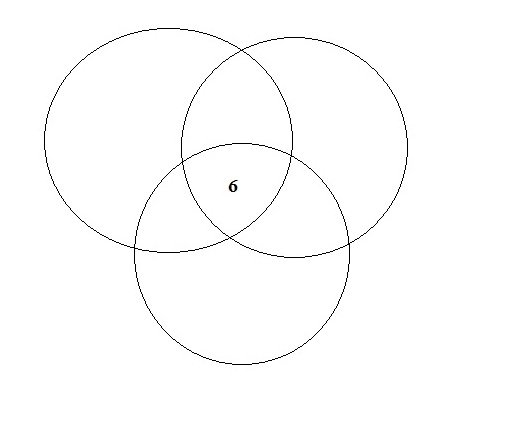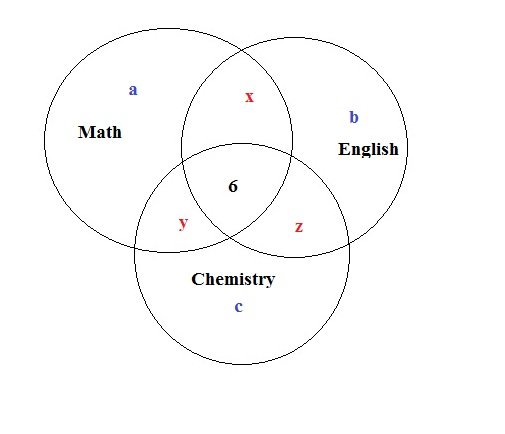How to draw a Venn Diagram
At a certain school, each of the 150 students takes between 1 and 3 classes. The 3 classes available are Math, Chemistry and English. 53 students study math, 88 study chemistry and 58 study english. If 6 students take all 3 classes, how many take exactly 2 classes?
A. 37
B. 43
C. 45
D. 60
Step 1: DeconstructionThis is where you extract the given information from a problem. Use a symbol for each section given to you. I usually use the first letter in caps. Please remember at this point that any number specified without explicitly mentioning that it's "exactly" or "only" for a certain subject is not to be taken so.
For instance, in this case, it says 53 math students. This doesn't mean students who are taking only 1 subject (Math). This could include students who are taking Math and Chemistry or Math and English or all three too. So now break down the numbers given to us.
Total = 150
M (Total) = 53
C (Total) = 88 [Why the hell are people studying more Chemistry than Math?]
E (Total) = 58
MCE = 6
We are asked to find MC + CE + EM.
Step 2: Drawing the diagramALWAYS start from the center of the Venn Diagram wherever information is available. This will make life infinitely easier.
In this case, the center is the intersection of all three circles, i.e MCE = 6
So fill that in to the diagram you've drawn.

Now that you've gotten that, let's start filling in a variable for each section not known to us. Here, consider each letter to represent only that specific section and not the entire circle or a larger portion.

So now that you have the parts filled in, what you need to do is write down what you have in the diagram in terms of numbers. So we are given the totals for each subject.
Look at math first. There are four types of people taking math (each group of these people mutually exclusive, and not in common with any other group)
1. Only math: a
2. Math and Chemistry: y
3. Math and English: x
4. All three: 6
So now represent this as a sum and you get
\(a+x+y+6 = 53\) and hence \(a+x+y = 47\)
Similarly for the other subjects you get:
\(b+x+z+6 = 58\) and hence \(b+x+z = 52\)
\(c+y+z+6\) = 88 and hence \(c+y+z = 82\)
And then you have the total:
\(x+y+z+a+b+c+6=150\) and hence \(x+y+z+a+b+c = 144\)
Step 3: SolutionThis is perhaps the most intuitive part, but in my experience the first part of this step is the same in all overlapping sets problem. It's only what's asked for that's different.
Add all the individual equations together to get a combined equation with all the variables and a number.
So you get:
\(2(x+y+z) + a+b+c = 47+52+82 = 181\)
Rearranging this to get \(a+b+c\)we get \(a+b+c = 181 - 2(x+y+z)\)
Substitute this into the total equation we derived earlier saying \(x+y+z+a+b+c = 144\) so you get:
\(x+y+z+181 - 2(x+y+z)= 144\)
Upon rearranging this you get:
\(x+y+z = 181-144 = 37 \) which is option A the right answer.









